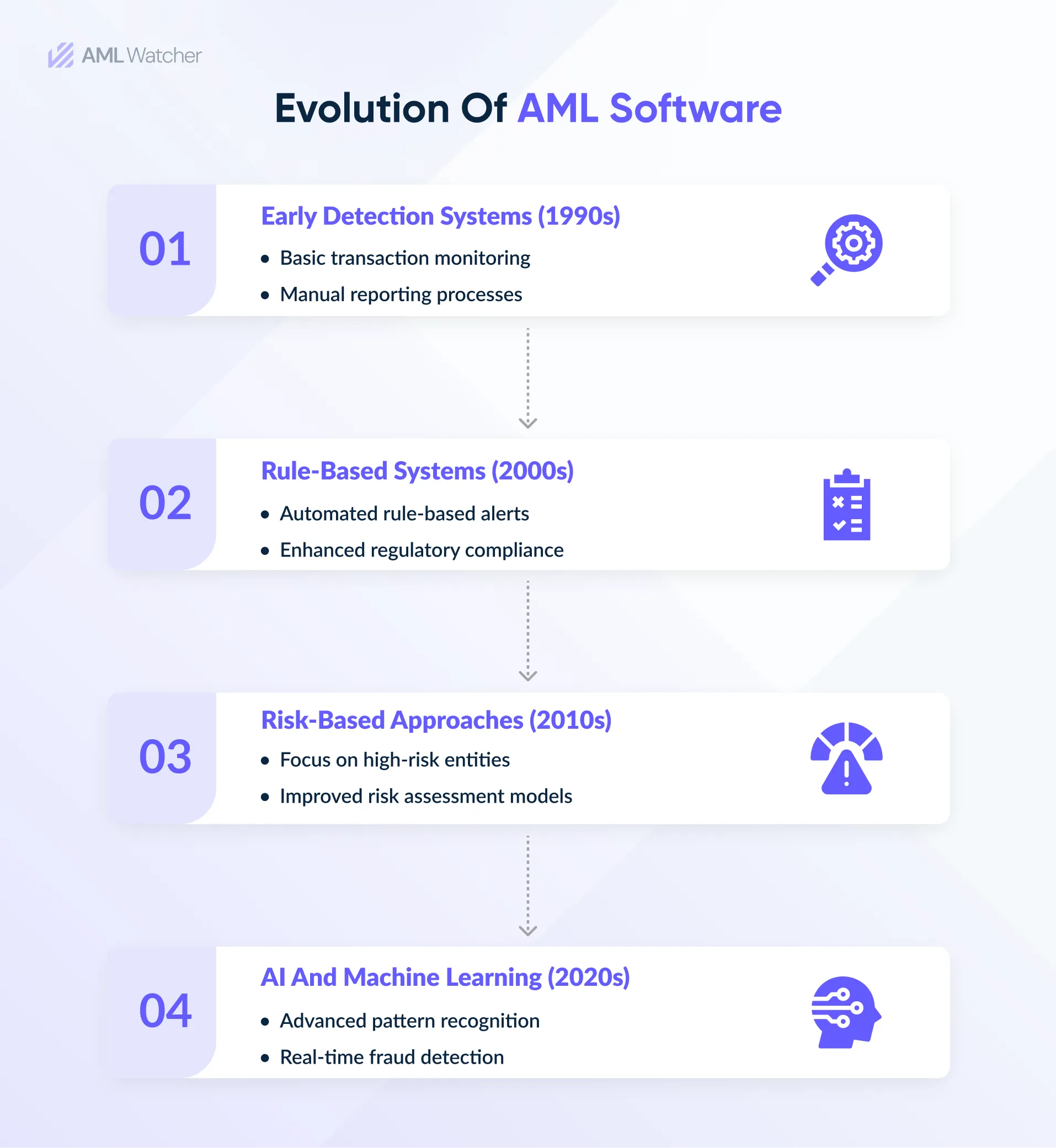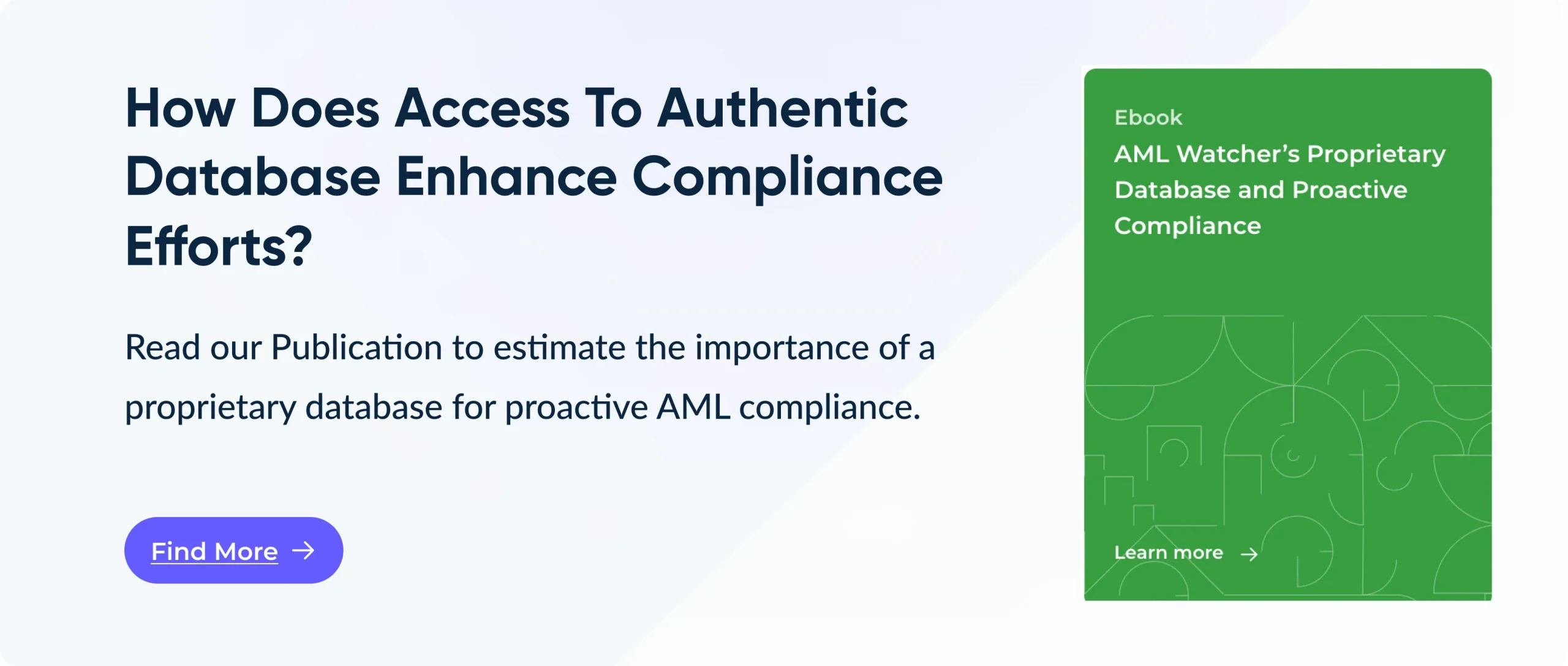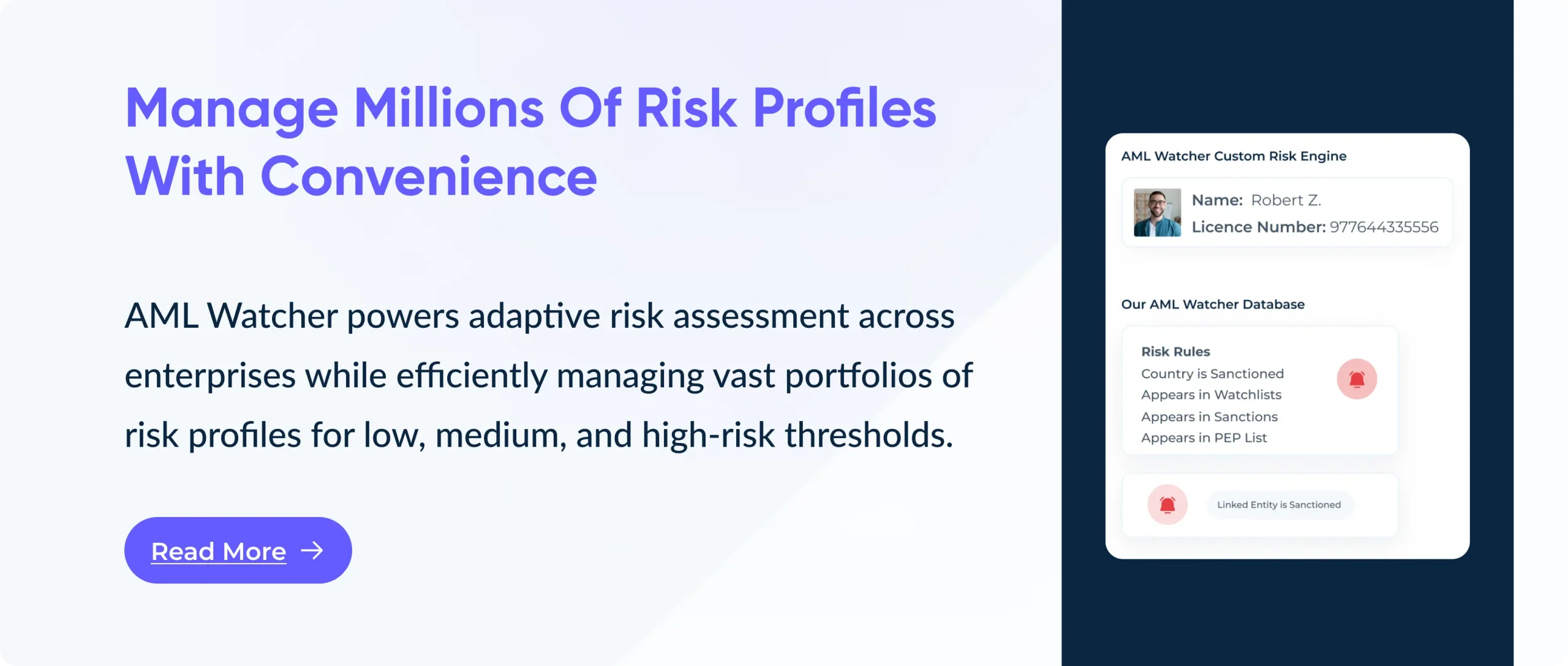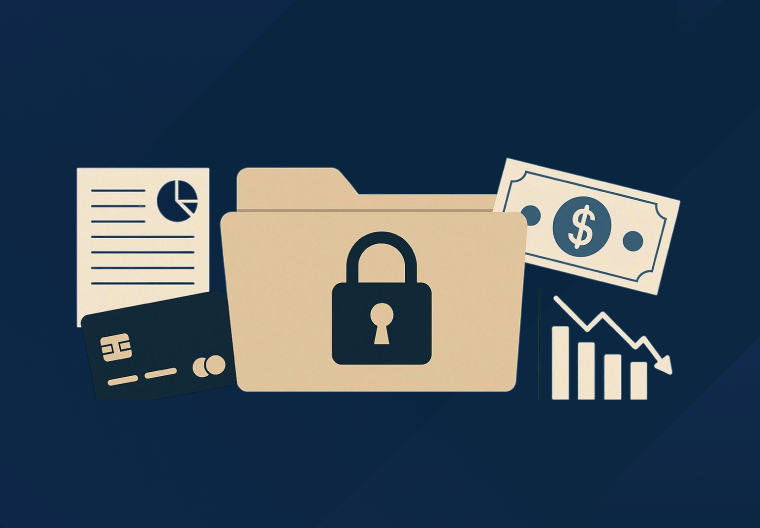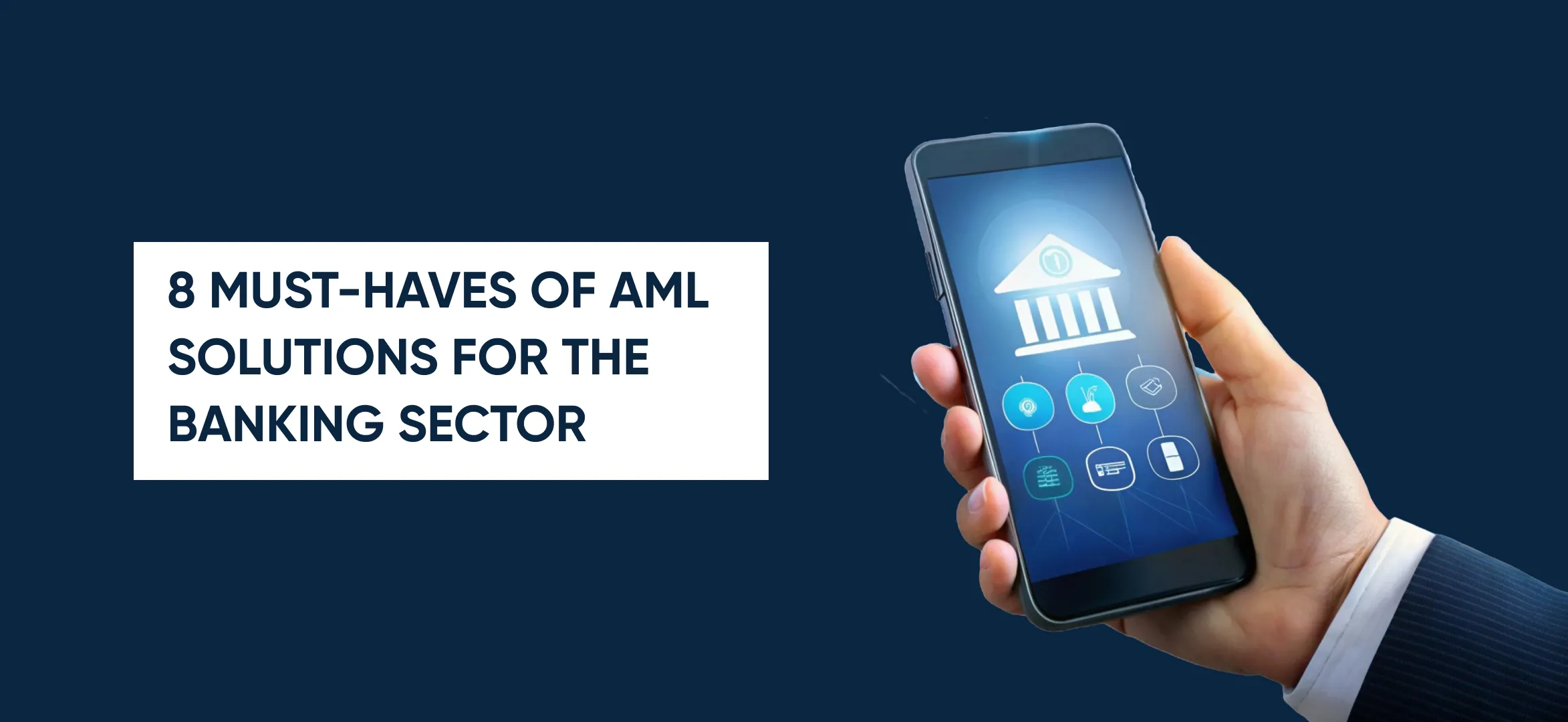
8 Must-Haves of AML Solutions For The Banking Sector
Think of a financial space, where crimes are prevented before they even begin!
This isn’t a distant dream but a happening reality that could be achieved by replacing the bank’s legacy screening solutions with efficient AML screening software.
AML regulations have become more stringent and complex to stop financial crimes and with the rise of advanced technology, launderers are using more unique ways to commit various financial crimes.
For instance, purchasing digital Art and NFTs is a means of laundering money by buying and selling digital assets at inflated prices to transfer value.
And what’s more shocking and distressing is that 5% of the global GDP is funneled into money laundering, as reported by the Financial Action Task Force (FATF).
Have you ever wondered how the banking sector can instantly detect millions of dollars in money laundering every year?
Launderers’ innovative ways to conduct financial frauds have increased the strictness of implementing AML regulatory compliance programs for banking sectors, making them the ultimate battleground between AML compliance and money launderers.
Now the crucial challenge here is how banks can stay vigilant about those smart laundering ways and utilize proactive approaches to mitigate potential risks.
Stay connected as we’ll explore; how an innovative AML software enhances the bank’s AML compliance system and the best features that optimize the efforts in detecting and combating money laundering crimes.
From Manual Processes to AI-Driven Software Solutions
When we think about Anti-Money Laundering-AML software today, we consider it an advanced set of algorithms and real-time monitoring systems.
But the journey to these AML tools for banks has been long and fascinating, stretching back decades.
Going back to the early 1970s, when the first AML technology, the Bank Secrecy Act, was introduced for the banking sectors to combat financial crimes
However, events like 9/11 saw the implementation of the USA PATRIOT Act, which imposed stricter AML regulations on banks, forcing them to automate the reporting of suspicious transactions.
After 2010, AI and machine learning revolutionized AML software in new ways, reducing false positives and revealing hidden patterns of money laundering and other financial crimes.
Considering this continuous growth of screening solutions and evolving financial crime challenges, it’s important to explore the essential features of an effective AML screening solution.
8 Must-Haves of AML Software for the Banking Sector
If you know the AML compliance requirements for banks, you must find out how to achieve those regulations.
AML compliance software, the custodian of financial institutions, enhances AML compliance programs for the banking sectors by flagging suspicious and unusual clients in real-time.
Did you know the Banking AML Software market is expected to grow from $2.7 billion (2022) to $7.4 billion by 2030?
Excellent utilization of technology and human expertise through a collaborative approach presents a feasible solution to these evolving regulatory demands.
But How?
Through its Global Data Sources And Coverage
AML Watcher taps into a wide range of databases, including more than 100,000 global sanctions lists (e.g., OFAC, UN, EU), Politically Exposed Person data, watchlists, international leaks, and adverse media sources.
Detailed data coverage ensures that the solution can detect high-risk individuals and entities across various jurisdictions. Thus helping the banking sector to align their screening protocols with worldwide databases.
Real-Time AML Data Update
AML Watcher offers global screening coverage with real-time data integration. This ensures that the banks always have updated information from around the globe to immediately detect and report suspicious activities.
The platform updates data every 15 minutes from global sanctions lists, PEP databases, international watchlists, adverse media sources, and other critical data points.
Building Proprietary AML Database
Unlike many competitors, AML Watcher builds its own databases by researching, extracting, and compiling data from various public sources, and official documents, and conducting rigorous screening processes.
It helps in achieving the accuracy, relevance, and reliability of the data obtained so that the banks have confidence in their AML compliance and risk assessment efforts and avoid doing business with entities involved in money laundering or financial crimes.
Via Transliteration Capability
Transliteration ensures that names written in different scripts, such as Arabic, Cyrillic, or Chinese, are accurately converted into a standard format for screening. This feature of AML Watcher helps banks conduct thorough cross-border AML compliance by eliminating the risk of name discrepancies due to language or script differences.
With transliteration, banks can accurately screen names against global sanctions lists, watchlists, and PEP databases, preventing money launderers from using non-Latin scripts to avoid detection.
Providing Custom Risk Scoring
Banks deal with a diverse spectrum of clients, from small businesses to multinational corporations. They can use Custom Risk Scoring to create tailored risk profiles for different types of clients and modify risk threshold criteria.
Banks can focus resources on monitoring suspicious activity and transactions, by assigning higher risk scores to clients in high-risk industries or regions. This proactive approach helps identify potential money laundering activities before they expand.
Utilizing Phonetic Matching Feature
Phonetic matching enables banks to capture name variations that sound similar but are spelled differently, such as “Mohammed” vs. “Muhammad.” AML Watcher’s phonetic matching feature ensures that even minor spelling differences don’t allow suspicious individuals to bypass the screening process.
This reduces the occurrence of false negatives and enhances the bank’s ability to identify potential money launderers or fraudsters, making it harder for criminals to manipulate their names and escape detection.
Through On-Premises Solution
For banks, maintaining the security and privacy of client data is paramount. With AML Watcher’s On-Premises Solution, banks can conduct AML screenings within their own secure infrastructure, ensuring sensitive client information is not exposed to external networks that could facilitate money laundering activities while meeting strict regulatory data protection requirements.
Complete Cost and Feature Control
As client profiles increase and financial regulatory requirements change, the solution can adapt, providing continuous and effective AML measures.
AML Watcher provides customizable options, allowing banks to select the specific features and screening volumes they need, with costs directly aligned to usage.
Banks pay only for the features and volume they use, giving them full control over costs, functionality, and the number of profile checks conducted.
This scalability feature emphasizes that banks can effectively operate AML compliance programs at different levels of the organization’s size and structure.
“We must make better use of technology, to make us more effective and efficient in weeding out criminal activity.”
– David Lewis, FATF Executive Secretary.
In 2024, every business, regardless of the industry, is at risk radar among criminals. Thus, risk assessments for risky profiles, real-time monitoring, and protecting business integrity and credibility are undoubtedly crucial needs.
The right tools can be game changers to combat money laundering in financial organizations.
We are here to consult you
Switch to AML Watcher today and reduce your current AML cost by 50% - no questions asked.
- Find right product and pricing for your business
- Get your current solution provider audit & minimise your changeover risk
- Gain expert insights with quick response time to your queries

